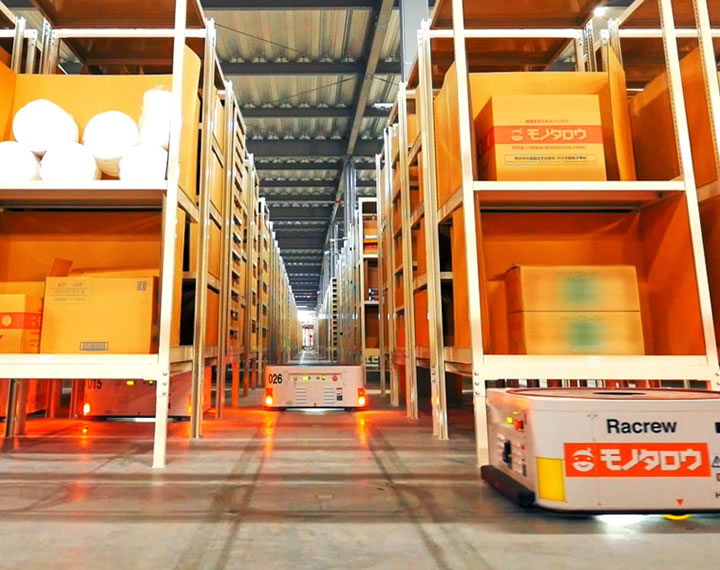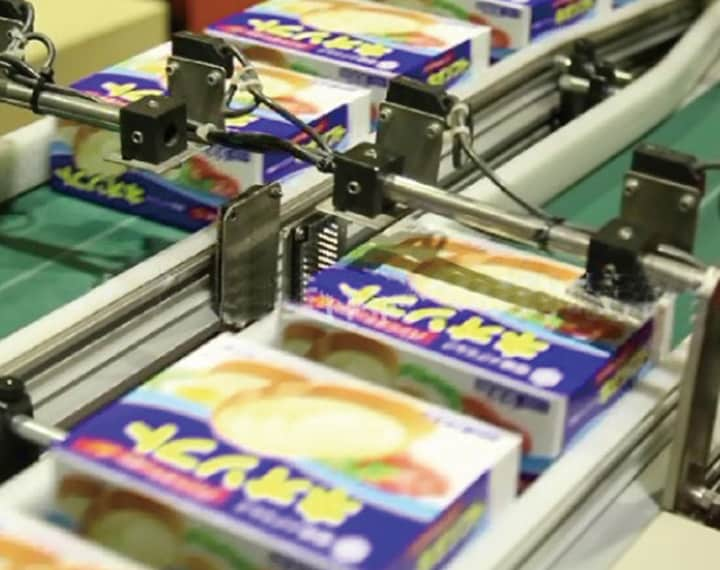Transforming the logistics industry: A delivery planning system now in operation at Mitsui & Co. Group
Mar. 5, 2021
Editing Team
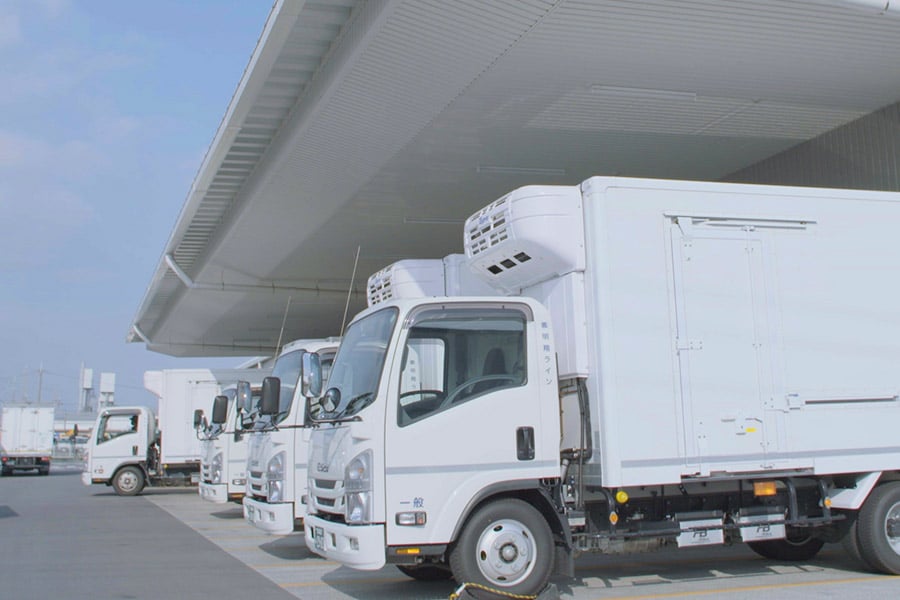
From food to everyday goods, products necessary to our daily lives are transported daily via logistics operations. Comparable to the circulation of blood in the body, logistics is a process that is vital to supporting the very foundation of our daily lives. This importance has only increased as the COVID-19 pandemic drives a trend toward “Stay Home” and consumption at home.
The logistics industry, however, is facing challenges, including driver shortages and severely time-restricted delivery arrangements, and these have generated a demand for wide-reaching increases in work efficiency. To find solutions to these issues, Hitachi Group has directed its efforts toward the full automation of delivery planning, resulting in the development of a delivery planning system that considerably improves labor environment of drivers and efficiency of transport.
“Full automation” of delivery planning is under its way
The logistics industry has continuously grappled with such challenges as driver shortages due to a shrinking labor population and a deterioration of the labor environment caused by waits at cargo collection points and delivery destinations and by nighttime operations. Moreover, as more and more people use online shopping, logistics needs have shifted toward smaller lots and higher frequencies. This has led observers to point out that conventional planning carried out by human workers has reached its limits.
Then came the COVID-19 pandemic. The number of people staying at home to avoid contact with other people has increased, aggravating an already serious shortage of drivers for transporting goods.
Seeking a solution to this structural problem in the logistics industry, in 2017 Hitachi began trials aimed at optimizing and improving the efficiency of logistics work by employing AI, IoT, and other leading-edge technologies. In partnership with Mitsui & Co., which has a history of working on the digitalization of logistics, Hitachi introduced a delivery optimization system at delivery centers run by logistics companies of Mitsui & Co. and started verification testing in 2018.

According to Mr. Kazuya Uyama, an engineer at Hitachi, Ltd. who led the new system's development: "Our goal was to completely automate truck delivery planning so that there was no reliance on people."
He further elaborated: "Effective delivery planning had to be based on such factors as the situations at individual convenience stores and other delivery destinations as well as requirements such as designated delivery times. For example, does the destination convenience store have a parking lot, and if it does not, are there any nearby parking lots where the driver can park? How long does loading and unloading take? It was necessary to get a detailed understanding of these things for each destination and to consider individual characteristics in order to create delivery plans capable of reducing the number of truck delivery routes. Up to now, delivery planning has relied on veteran planners that have detailed knowledge and experience of these routes."
However, as long as delivery planning is dependent on the knowledge and experience of a veteran planners, know-how winds up concentrating solely in that person and is not shared within the organization. Moreover, if a person in charge takes time off for illness or leaves the company, there are immediate and negative consequences on work execution.
As Uyama says: "To address this, we sought to develop a system that fully automates the work of delivery planning, allowing anyone to easily create optimal delivery plans. This was made possible by visualizing the knowledge of experienced workers and weaving together all their know-how and the items needing coordination."
The automation of planning was also effectively applied by making use of return transports, in other words, trucks on their way back to the delivery center from their destinations.
Truck transport efficiency was significantly improved by having trucks stop at another nearby delivery center after a delivery to pick up more packages for to be sent to another destination. Because the usage of empty returning trucks requires planners to figure out complicated routes, only about 60% of such trucks were initially being used.
Using the tacit knowledge of veteran planners in system development
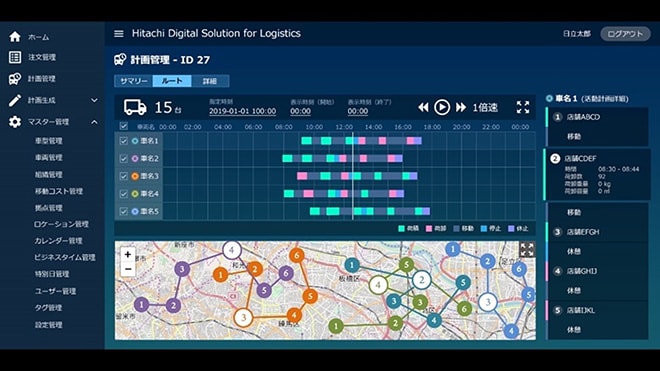
Uyama says that "Creating a plan that a driver can actually execute is crucial when considering how to use return transports." Essentially, it is counterproductive to burden the human driver with an overly efficient delivery schedule produced by a system.
Veterans in charge of delivery planning were usually drivers themselves in the past and are therefore deeply familiar with the details of the actual state of transport, allowing them to create plans with just the right amount of leeway. To make it possible for a system to create plans based on these real driver situations, we analyzed every bit of the tacit knowledge residing in the minds of experienced workers and used it in system development.
First up for analysis was the daily delivery data managed by logistics companies and the service records data for each truck recorded by GPS navigation systems. Up next were the daily work reports, which recorded the time in hours and minutes that a truck arrived at a store and how many minutes later it left.
These analyses led to a new discovery, says Uyama: "We found out that even veterans had preconceptions. For example, they may have thought that loading and unloading at a certain store took 15 minutes when it actually took 20. We first learned of this reality from a detailed analysis of GPS data. We committed a lot of time listening to veterans from a number of different fields and combined this with data obtained by various devices so as to create mathematical functions for operating a system."
The resulting delivery planning system incorporated variables such as: (1) date and time of delivery; (2) location of logistics centers and delivery sites; (3) travel routes and travel time; (4) information on traffic congestion; (5) loading and dwell time; (6) truck classification (tonnage); and (7) drivers themselves.
Hitachi also completed an algorithm that automatically produces plans in a short time. This lets the person in charge create a delivery plan showing the most-efficient routes for each of several dozen trucks by simply entering such conditions as number of loads, delivery destination, and truck departure time.
Outputting complex delivery plans in a matter of minutes
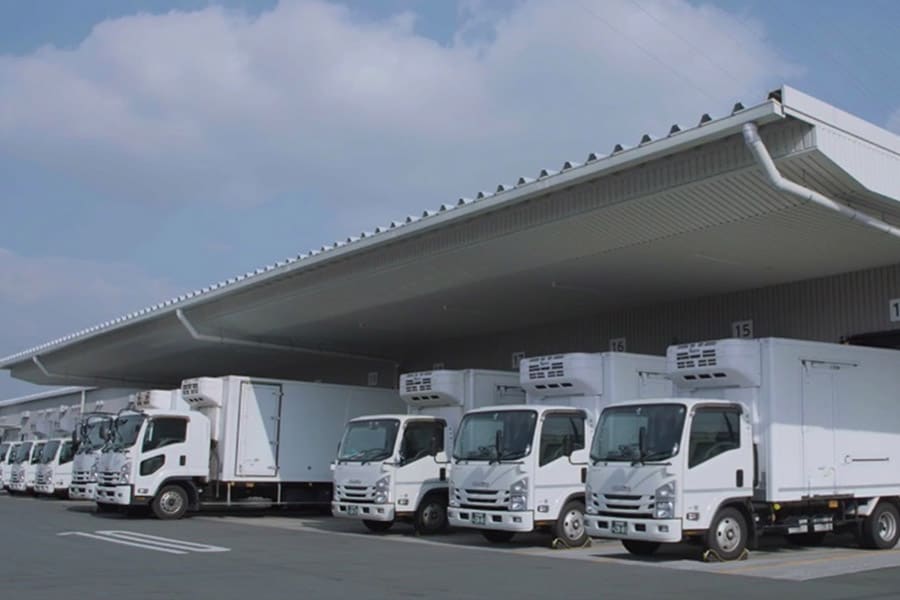
The digitalization of delivery planning has made it easy to create complex plans that were previously hard to achieve. In truck transport, cargo is loaded and unloaded at berths at a logistics center.
Consider, for example, creating a plan in which 50 trucks will be loaded at 10 berths, then making deliveries to 300 stores. Previously, when deliveries were manually planned, the trucks with the earliest delivery time were prioritized for berth assignments. However, this method resulted in a lot of time wasted for multiple trucks as they had to wait for the previous truck to load.
In contrast, the new digitalized delivery system enables planning berth assignments that take delivery routes and details of loaded cargo into consideration, greatly reducing standby times. Verification testing showed that it was possible to reduce the number of necessary trucks from 50 to 45.
Describing the merits of the system, Uyama said that, "When deliveries are executed using routes planned by this system, it can achieve about a 10% reduction in the number of trucks. At the same time, it can improve transport efficiency and, by decreasing driver overtime and other such factors, improve labor environment."
Bussan Logistics Solutions CO., Ltd., a logistics company that is part of Mitsui & Co. Group, also cooperated in the verification testing prior to implementing the new system, and is now in operation. Mr. Hiroyuki Akita of the Kansai Regional Office, Combined Distribution Center Operating Dept., Bussan Logistics Solutions (at the time of interview), noted that processing speed is important to delivery planning systems. "In my department, we transport food and other goods from multiple delivery centers to convenience stores in the Kansai area. Although we did try in the past to digitalize delivery planning, all the systems we introduced had the problem of calculation, taking an extremely long time."
With the previous system, it was not unusual for plan output to take over half a day when changing delivery conditions.
"Compared to that," said Akita, "Hitachi’s system takes only a few minutes to output a delivery plan even after changing to a more complex condition, based on the practicalities of the work involved. Last year when we planned routes to and from a newly established delivery center, it went without a hitch. We were able to make substantial cuts in personnel and time costs."
Toward improving delivery efficiency in a variety of fields

According to Mr. Masao Mitarai of the Logistics Solution Dept. of Mitsui & Co., "In the logistics business, if even one package out of a hundred does not get delivered, it's a big problem. This is a business that takes it for granted that packages will absolutely be delivered to the customer on schedule."
Mitarai helped drive the implementation of Hitachi's delivery planning system at Mitsui & Co. affiliate companies, attending verification testing and participating in improving the system. He explains the reason for selecting Hitachi as a partner, as follows: "Past experience in the field showed us that our existing system could not achieve the type of complete planning automation that we wanted, due to limitations in applying the detailed work requirements. In the current project to implement a new system, we again approached several companies, but only Hitachi let us sit in on meetings with researchers specialized in mathematical calculations so we could discuss the feasibility of applying detailed work requirements. As more meetings were held, we saw that Hitachi had the advanced technologies needed to mathematically solve the problem of delivery optimization. More importantly, we were able to share a sense of the fastidiousness and detailed know-how concerning operations in the frontlines of logistics work. This was our primary reason for deciding to collaborate with Hitachi in building a new system."
The use of Hitachi's delivery planning system is not limited to delivery for convenience stores. It is also available for general use in efficiently planning deliveries in a variety of logistics fields.
Going forward, Hitachi will expand the application of this system to include many other fields and is also looking toward to deploying the system globally. The operation of similar systems has already started for logistics companies in Thailand and China.
This system, which achieves delivery planning without manual dependencies and improves transport efficiency, has the potential to contribute to many other industries.

